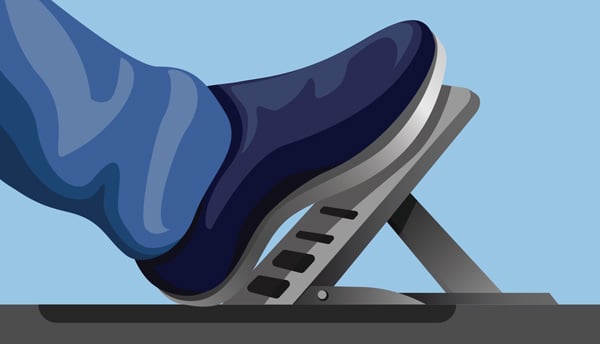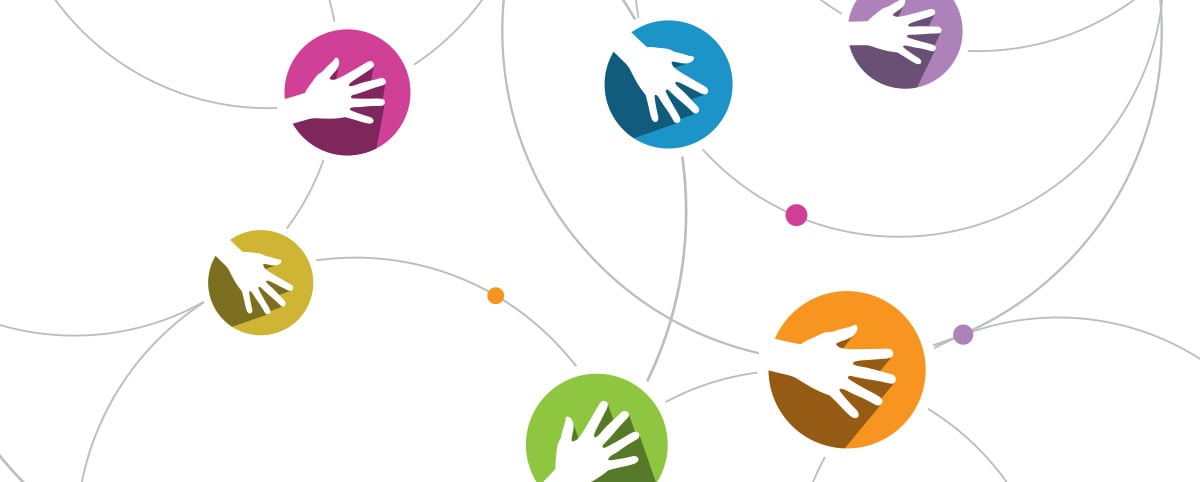
4 keys for reaching Top of the Table
Invest in your own personal development and learn new skills.
I copied what other Top of the Table members were doing and learned from them. I also joined a coaching program, which I’ve been part of for the last 15 years. That helped me to learn better habits, routines and processes.
Delegate activities that you’re not good at.
When you look at everything you do during the day, somebody else could likely do quite a few tasks for you. That can free up time so you can see clients or think about the business. We also formed collaborations with other organizations that provided extra resources. For example, I don’t employ a paraplanner. I outsource that role to a specialist paraplanning company. I’ve worked with the same paraplanner for the last three years, and she’s extremely well qualified.
Take time to work on the business rather than in it.
When I’m participating in my coaching program and study groups, I like to work through ideas about how to deliver the best possible service to our clients and do it in the best way. I always identify two or three projects before I go off to my coaching workshops, and I hope that at the end of my coaching day I’ve got some clarity around those. That helps me decide whether I’m moving forward or how the team is going to move forward.
Have the right mindset. Getting that right makes all the difference. Having a positive can-do attitude gives me confidence and inspires my team. Concentrating on protecting that mindset is also very important.
—Katy Baxter, Dip PFS, Newport, England, UK, 18-year MDRT member

Drive forward
Here’s a phrase to use when you’re talking with clients: “Mr. and Mrs. Client, I would suggest that we drive forward in putting this plan in place.” Instead of saying, “Mr. and Mrs. Client, I believe we should move forward.” Drive has urgency, power and connotes importance to the client. If we’re just going to move forward, we move forward at various paces. Some move very quickly, some not so much. But if I say, “Mr. and Mrs. Client, we’re not going to move forward, we’re going to drive forward,” you see how one word makes a big difference.
—Shane E. Westhoelter, AEP, CLU, Albuquerque, New Mexico, USA, 13-year MDRT member
Overcome a product’s disadvantages
When proposing an insurance product, I focus on its disadvantages rather than only the advantages. In other words, I sufficiently state that the product is imperfect. I inform the client of the risk factors according to the product itself or the characteristics of the product. Then I add, “If the disadvantages I just listed can be sufficiently overcome, then the product is a good product.” This method may feel like a defensive approach, but I’ve found that mentioning the disadvantages can actually gain the client’s trust and help improve the retention rate.
—Jonghwa Lee, Seoul, South Korea, 10-year MDRT member

Save time with templates and dictation
We saved a lot of time, and possibly the wage of one full-time staff member, by organizing template letters for our annual client review meetings. I use Otter.ai for dictation during the client meeting, which the office then uses to transcribe. The customized language usually takes only three minutes and is cut and pasted into the template letter I send after the meeting. I spend a maximum of 45 minutes of follow-up time per client meeting to do the annual report and compliance paperwork. We are currently experimenting with ChatGPT to make use of the latest technological developments. This method can save time, enabling you to be more productive and profitable in other business areas.
—Helen Jayne West, APFS, Plymouth, England, UK, 25-year MDRT member
Addressing addictions
It is very powerful and disarming to ask clients about addictions. The traditional financial discovery process doesn’t talk about those things, but an addiction can be really destructive to a family’s net worth or just simply their dynamics. Obviously, I’m not a therapist, and I don’t want to overstep my credentials, but when I see there’s a need, I have professionals to send them to, ranging from rehab centers to mental-health professionals or counselors. I am making sure that the cloud that is blocking everything else is taken care of. So, they see that I’m there to help them, not to sell them something.
—Elke Rubach, LL.M, CLU, Toronto, Ontario, Canada, seven-year MDRT member
Leverage policy reviews
Part of my client care strategy involves offering policy reviews to inform them about their plans and coverage. Clients greatly value this gesture, especially those who have been with me for two years or longer. Through the policy review process, my clients and I can:
Review their beneficiaries. This is an opportunity to offer and extend my help and services to their families.
Come up with other plans. We can identify areas in their portfolio to upgrade or focus on, such as additional insurance coverage, enhanced critical illness protection and top opportunities for a better retirement plan.
Connect with other people. This is a good time to get them to refer me to their close friends and family.
—Kathlyn Anne C. Sarmiento, Makati, Philippines, six-year MDRT member

Doctor vs. drugstore
I offer my clients two different styles of service, and they choose the one that suits them best.
The first style is the “doctor” style, which involves a complete financial planning process. It’s like going to see a doctor who won’t prescribe anything until you have done a health check. This is the best practice where I can use my professional knowledge and experience to help my clients.
The second style is the “drugstore” style, which consists of a scope of service with simplified packages. It includes some of my tailored solutions for retirement planning for professionals and wealth succession planning for business owners. It’s like going to a drugstore where you think you know what you need. But at the same time, you are curious about what other options are available.
I found that offering this scope of service has helped speed up some of my client meetings, and I have more time to focus on delivering the “doctor” style with my high-net-worth clients.
—Chen Gifford, Hong Kong, China, 11-year MDRT member
How vs. why
When asking a question, I suggest using the word how and avoid using the word why. That way, you’re asking a neutral question that allows people to express themselves freely, and you can make a real connection with people and steer away from conducting a transactional business. When we ask why too much, it sounds like an interrogation or a disagreement with our prospect that will likely lead to a defensive conversation or rejection.
—Woei Sean Tong, Shah Alam, Malaysia, nine-year MDRT member
Key to strong relationships
Networking is not only about how many people you know, but about how strong the relationships are. Building strong relationships requires consistent effort and attention to detail. For me, one of the most effective ways to optimize a network is regularly visiting or congratulating clients on important days such as birthdays, wedding anniversaries or other important moments in their lives. These simple actions can show your contacts that you really care about them, and they can have a big impact in building relationships of mutual respect and trust.
—Santoso, Jakarta, Indonesia, five-year MDRT member
Retirement account doorway
Not many advisors are aware that some employer-sponsored retirement plans allow an outside financial services professional to help the participant manage the portfolio even though they are not the administrator of the plan. In the U.S., for example, some 401(k) retirement plans allow for self-directed brokerage accounts, or SDBAs. This feature helped me garner additional clients and ancillary business by just communicating to participants how I can offer value as a sub-advisor under their plan.
Since these retirement accounts are generally offered by an employer, I get to work with groups of people at a time and meet multiple prospects during a single meeting. I establish a relationship with a client early, and by the time they are ready to retire, I already have a proven track record of working with them, and they already know they want to work with me in the future. This doorway into employer-sponsored retirement accounts has helped me work with spouses, children, relatives and friends of those individuals. Along with increasing your clientele and production, your clients can refer you to accountants and attorneys to serve as your centers of influence.
—Louis Rivera, AWMA, Buffalo, New York, USA, three-year MDRT member

Building a network of influential contacts
Volunteering is a strategic investment in your professional network. Engaging with charitable organizations not only fosters a sense of community but brings you face-to-face with a diverse array of professionals, each with their own spheres of influence. These people aren’t just entries in your contact list; they’re connections that have the potential to propel your insurance advisory career to unprecedented heights, and resulting referrals are a testament to the trust forged through shared values and mutual respect. Moreover, the depth of these relationships can extend to collaboration and co-hosting workshops or seminars with various professionals, enabling you to deliver a comprehensive approach to addressing your clients’ financial concerns. Such endeavors not only solidify your expertise but also reinforce the trust your clients place in you.
—Neha Prasad Doiphode, MBA, Navi Mumbai, India, 13-year MDRT member
Get the team on board
We have incorporated Monday.com to aid communication between staff members and advisors. This supplemental software gives everyone in the office one place to track case status, service items and commissions. It is nice to have one spot to get a high-level view of tasks and case management without having to dive into detailed CRM folders, consult spreadsheets, or email each other when requesting appointments, etc.
Each staff member has a “board” where I can assign tasks. For instance, I can go to our scheduler’s board and add a client. I can get updates on status and post any notes regarding the appointment. I can also select the priority level of the appointment. Our case manager updates the insurance offers or asset transfers and notes where we are in the process.
As managing partner in my firm, I know at a glance what my team is working on and the status of cases and service requests. I had struggled for years stitching together multiple programs to manage the business. This app has given me and my business partner a place to get a high-level view of our progress toward our business goals.
—Jeannine Resteiner Citoli, Bellevue, Washington, USA, 21-year MDRT member